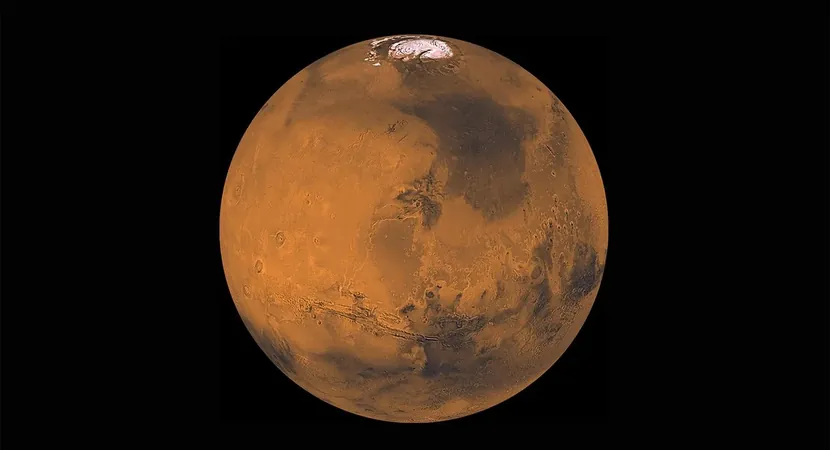
New Year 2025: Experience a Spectacular Meteor Shower and Glorious Views of Mars in New York!
2024-12-30
Author: Jessica Wong
As 2025 dawns, eager stargazers in New York City will have the perfect opportunity to welcome the new year under a celestial canvas! The Quadrantid meteor shower, known for its rapid burst of shooting stars, will grace the skies over the first five days of January, peaking with an astonishing display of up to 40 meteors per hour. But that’s not all – January is also set to showcase Mars, as it reaches its greatest brightness and size of the year!
According to Frank Bifulco, a prominent member of the Rockland Astronomy Club, January offers excellent visibility for celestial objects, which appear much earlier in the evening sky. "While the views are spectacular, be prepared for the chilly winter temperatures," he noted.
As the clock strikes midnight on New Year’s Eve, skywatchers can turn their gaze southward to spot the captivating Beehive star cluster, framed within the constellation Canis Major, just beneath the twinkling brilliance of Sirius, the brightest star in the night sky. January provides a unique opportunity to view both the bluish Pleiades and yellowish Hyades star clusters in the Taurus constellation, particularly during the early evening hours. On January 9, look out for the moon as it graces the area to the right of the Pleiades.
“The Pleiades are exceptionally bright and well-studied,” shared Kat Troche, a NASA solar system ambassador. “They captivate astronomy enthusiasts around the globe.”
In addition to bewitching star clusters, several planets will make appearances as the month unfolds. Catch a glimpse of Venus, which will shine brilliantly near the moon after sunset on January 3. This dazzling planet, often referred to as the hottest in our solar system, will be undeniably visible across the city, even in the bustling heart of Midtown Manhattan.
“Venus is incredibly bright; you won’t miss it,” Bifulco remarked. Saturn will also be on display, positioned beneath and to the right of the moon on January 4.
Yet, it is Mars that steals the show in January. On January 13, stargazers can witness a remarkable event known as an occultation, where Mars will slip behind the moon at precisely 9:21 p.m., only to reemerge slightly over an hour later. Such astronomical phenomena are rare and should not be missed by any sky enthusiast in the city.
Mark your calendars for January 16 when Mars reaches opposition, appearing at its closest proximity to Earth and fully illuminated by the sun. According to Troche, “Mars will be easy to identify as it will be located right next to the moon, glowing with a striking red hue that stands out against the night.”
Prepare your warm blankets, gather your friends and family, and embark on a stargazing adventure to remember this January. Who knows, you might just spot a shooting star and catch a glimpse of our neighboring planet in all its glory! Don’t miss this cosmic celebration as we step into 2025!

 Brasil (PT)
Brasil (PT)
 Canada (EN)
Canada (EN)
 Chile (ES)
Chile (ES)
 Česko (CS)
Česko (CS)
 대한민국 (KO)
대한민국 (KO)
 España (ES)
España (ES)
 France (FR)
France (FR)
 Hong Kong (EN)
Hong Kong (EN)
 Italia (IT)
Italia (IT)
 日本 (JA)
日本 (JA)
 Magyarország (HU)
Magyarország (HU)
 Norge (NO)
Norge (NO)
 Polska (PL)
Polska (PL)
 Schweiz (DE)
Schweiz (DE)
 Singapore (EN)
Singapore (EN)
 Sverige (SV)
Sverige (SV)
 Suomi (FI)
Suomi (FI)
 Türkiye (TR)
Türkiye (TR)
 الإمارات العربية المتحدة (AR)
الإمارات العربية المتحدة (AR)